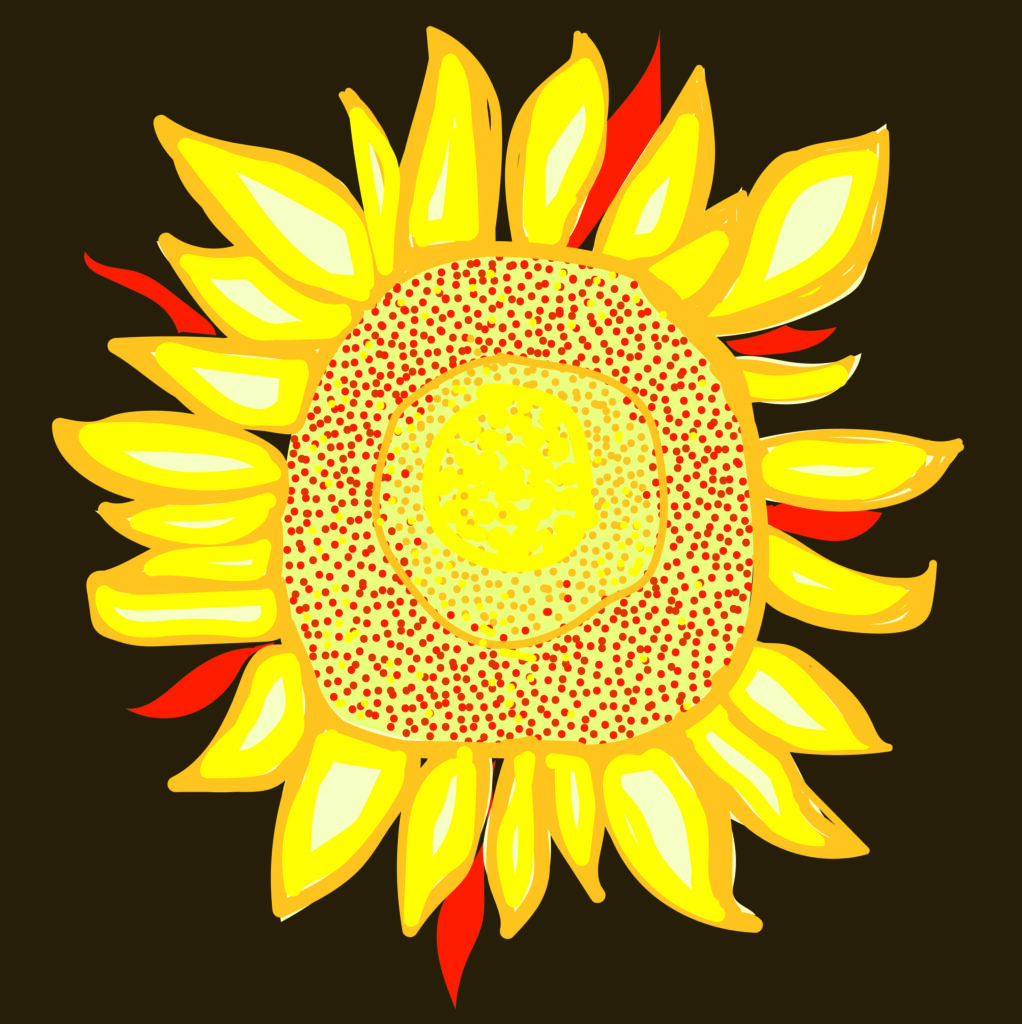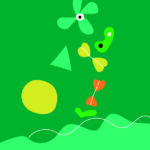Life changes. It’s a fact. Our bodies change, the weather changes, our minds change, people change, places change. Even the cells of our bodies are completely replaced approximately every seven years. According to the Tantric view of existence, and affirmed by modern science, the matrix of embodied life is a constantly changing web of energy.
Nothing stays the same for long. Do we flow with the changes or get stuck in our ways? Or do we change too much, too fast? Spiritual practice is the practice of conscious, directional, intentional change. There are many ways of creating change. Lately, the practice of yoga has exploded in the West, largely because it has such a profound ability to create change. However, much of yoga has been reduced to the physical asana, or postures. The physical is our most external, gross layer. True change actually occurs when we work with the more subtle layers such as consciousness, mind, or prana (life force). The chakras provide a lens to view ourselves on the subtle level. These plexuses of energy influence our lives, our feelings, and our awareness.
The chakras are basically the source of the external and obvious aspects of our lives. If we can go to the source, then change can be deep and lasting. This is the point of working with the chakras.
In Indian tradition, the chakras are the essential core of Kundalini yoga, a powerful practice of deep spiritual re-evolution which in turn forms the essence of Tantra yoga.
Kundalini yoga and Tantra are well known but deeply misunderstood practices in modern times.
In short, traditional Kundalini yoga is the practice of awakening the kundalini shakti (energy), which is our most powerful energetic force, and steering it through the chakras to create refined, conscious change. This is different than the modern yoga style of Kundalini yoga, though the modern style does have some connection to the traditional one.
Hatha yoga mainly comprises practicing asanas. In a sense, it is Kundalini yoga’s little sister because it focuses more on the external body. The practices we do on the mat are the baby steps towards the subtle Kundalini yoga. They were created to lay the foundations for improving the flow of prana (health), eventually resulting in the movement of kundalini (awakened energy).
The seven subtle centers of energy existing in the shukshma sarira (subtle body) form the essence of Kundalini yoga. They are called chakras, literally “wheel of energy.” These energetic wheels turn, move, and change within us—subtly but powerfully. As they turn, they affect our bodies, minds, and feelings in ways that influence our entire experience of life.
The first chakra is the root, called Muladhara. Muladhara chakra is the force that influences our survival and essential needs in life. Without basic survival needs satisfied, humans cannot progress on their spiritual path. Once we are established in basic survival needs, we are freed up to live according to our tastes and desires. This is the realm of the second chakra.
The second chakra is called Svadhisthana, the “dwelling place of the self.” This “self” refers to who we are as unique individuals, to our “personality.” Svadhisthana chakra helps to differentiate our “self” from other individuals’ “selves.” It is more about differences than about similarities. According to Tantra, no two individuals on the planet are or ever have been exactly the same. Our personalities are a unique makeup of traits, tastes, desires, and expressions that make our experience of life absolutely unique.
In this second chakra, the ruling element is water—,—changeable and adaptable, just like each individual’s personality. Like water flowing in the river, it never stays quite the same. However, despite the constant changing flow of water in the river, it remains the same river. Likewise, we remain ourselves throughout our lives even though we also are continually changing. There is and must be both stability and change —flow— in life and in our personalities.
The area of our bodies ruled by the second chakra is the hips; for this reason, it is also called the Sacral Plexus. The hips are home to our genitals, which are kept healthy by a continual flow of liquids. The organs of elimination are also here, and they, too, must be in a good flow for our bodies to function well. The water element also rules our taste. This includes the sense of taste that we experience when we consume food and drink, but it also extends into the taste of our personality that influences what we like and don’t like in clothes, music, partners, and all the other personal choices that we navigate as we live.
In Yoga, Tantra, and Ayurveda, the liquid that creates taste is called rasa, which is usually translated as “juice,” “essence,” “feeling” or “mood.” The fluid of the second chakra, water and rasa, strongly influence our emotional lives and feelings. Many of our feelings are caused by events coming into contact with our personalities and creating a reaction. How we feel and react is largely influenced by the quality of the water and rasa within us.
Can we flow and adapt to our feelings in a healthy way? Or does our emotional flow dry up? Or do we experience emotional overflow? Depending on our relationship with the second chakra and the rasa within, we can experience healthy or imbalanced emotions. And as we all know, problematic emotions can deeply disrupt our lives.
Svadhisthana chakra also rules sexuality. One of the most powerful expressions of our personalities is our sexual tastes, needs, and desires. Sexuality is simply one type of the watery energy called creativity. Making a painting, making a cake, making love, or making a baby are variations on this essential second chakra creative power. The second chakra influences all types of creativity and art, which are all based on taste, mood, and feeling. Good art and good sex depend on the creative transmission of feeling from one person to another. This is the rasa of creativity.
Rasa must be present if sex is going to happen, food is going to be eaten, or art is to be made. When our juices are dried up, we cannot easily create, express ourselves, reproduce, or (in extreme cases) even feel emotions. To be balanced and healthy individuals, our creativity and rasa must be refined so that we can have a good relationship with all parts of our lives ruled by Svadhisthana chakra.
Traditional depictions of the Svadhisthana chakra involve a variety of secret symbols and images that point towards the realities that are ruled by the second chakra. Understanding these symbols helps us to actually incorporate second chakra wisdom into our lives.
One of the most important symbols is the moon. The moon is closely related to the water element and to flow; it influences the tides and oceans, plants and the menstrual cycles, as well as our personality and our rasa.
In the case of the second chakra, the moon symbol is a fifth day waxing crescent moon, not a full moon. During a full moon, one can see quite well at night the things that are usually hidden from view. A crescent moon only sheds a small amount of light, and the resulting darkness obscures clear vision. The crescent moon points to a reality where we can only see a little of what is actually around us.
This is a deeply important symbol because the second chakra rules the subconscious mind. This part of our minds is largely hidden from our everyday awareness, just as the light from a crescent moon barely shows the forms and shapes around us. The subconscious mind actually has a huge influence over our feelings and our personality. In fact, our personality is largely based on memory, which is part of the mysterious and obscure subconscious. We see the outward manifestations of our personality that come to the surface through our behavior and feelings, but we rarely know the source of these feelings. The source is the dark and hidden subconscious. When we know the subconscious, we truly know ourselves and the essence of our personality. This knowledge can help us become more balanced and harmonious human beings.
The crocodile, Makara, is the animal symbol for the Svadhisthana chakra. A crocodile is a powerful and dangerous reptile that lives just below the surface of the water. This symbol relates to hidden and primal parts of ourselves that can suddenly burst to the surface from the subconscious. This Makara symbolizes the destructive qualities that the personality can manifest like egoism, pride, selfishness, greed, manipulation, tribalism, nationalism, sexism, and other qualities that isolate people instead of uniting them. This expression of our destructive lower nature is called pashu, the animal. When we act as animals instead of as refined human beings, the Makara comes up from the depths of our subconscious to devour us!
The refinement of our lives comes through developing a relationship with the many essential qualities of the second chakra. If we can cultivate the flow of our lives, if we can nurture our tastes, creativity, juiciness, and our rasa, and if we can learn about our hidden subconscious, our lives will expand into new levels of richness and satisfaction. This is the magic of working with the chakras: We receive insights into areas where we can change and grow with awareness and consciousness.
Randall O’Leary, has been a dedicated explorer of yoga since 1991. He has studied a variety of styles including Iyengar, Jivamukti, and Viniyoga. In 1995 he founded the Jungle Yoga Teacher Training School which merged into the Swara Yoga Academy in 2018. Randall is also a student of Tantra, Ayurveda, and Indian Mysticism. He was initiated into the ancient Indian spiritual order of Sadhus in 2006.






